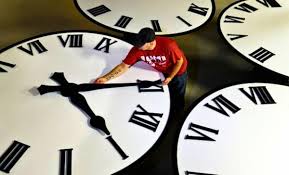As winter slowly gives way to spring, it’s almost time for Bloomsburg residents to adjust their clocks and embrace longer evenings with the arrival of Daylight Saving Time (DST). This annual tradition, designed to maximize daylight during the warmer months, will begin in March 2025, marking an eagerly anticipated seasonal change.
Here’s everything you need to know about why we observe Daylight Saving Time, when to adjust your clocks, and how it impacts life in Bloomsburg and beyond.
When Does Daylight Saving Time Begin in 2025?
This year, Daylight Saving Time officially begins on Sunday, March 9, 2025, at 2:00 a.m. On this day, clocks will “spring forward” by one hour, meaning the time will advance to 3:00 a.m. overnight. Residents of Bloomsburg and across most of the United States are encouraged to set their clocks forward before going to bed on Saturday night to avoid confusion in the morning.
The change will result in later sunsets, giving residents more daylight during their evenings—a welcome shift as the days grow warmer. The time change will remain in effect until Sunday, November 2, 2025, when clocks will “fall back” to standard time.
The Purpose of Daylight Saving Time
Daylight Saving Time was first introduced in the United States during World War I as a way to conserve energy by extending evening daylight. By shifting the clock forward, people could rely less on artificial lighting in the evening hours.
Although it was repealed after the war, DST made a comeback during World War II and was eventually standardized nationwide with the passage of the Uniform Time Act of 1966, which established consistent start and end dates for the time change. In 2005, the Energy Policy Act further extended DST by several weeks to its current schedule.
Supporters of DST argue that it promotes energy efficiency, reduces accidents by providing better visibility during evening commutes, and encourages outdoor activities, which can boost physical and mental well-being. However, critics point out that the energy savings are minimal in today’s technology-driven world, and the biannual clock changes can disrupt sleep patterns and overall health.
For more details on DST legislation, visit the U.S. Department of Transportation’s official page.
How Daylight Saving Time Affects Bloomsburg
In Bloomsburg, the time change has become an essential marker of the transition to spring. Local businesses, schools, and event organizers often adjust their schedules to take advantage of the extra evening sunlight. Residents can expect longer daylight hours for outdoor activities such as hiking at the Bloomsburg Town Park or enjoying the bustling downtown scene.
However, the time shift also comes with its challenges. Studies suggest that the adjustment to DST can temporarily disrupt sleep patterns, leading to fatigue and reduced productivity. Local health professionals advise residents to gradually transition their sleep schedules in the days leading up to the change.
Additionally, drivers should be extra cautious during the first week after the time change, as drowsiness tends to increase the risk of accidents. The National Highway Traffic Safety Administration (NHTSA) provides tips for staying alert behind the wheel during this period.
Tips to Adjust to Daylight Saving Time
Switching to Daylight Saving Time doesn’t have to be a jarring experience. Here are some tips to help you adapt smoothly:
- Start Early: Begin adjusting your sleep schedule by 15–20 minutes each night in the week leading up to DST. This gradual shift can help your body adapt more easily to the new time.
- Limit Evening Screen Time: Reduce exposure to electronic devices before bed to promote better sleep quality. The Centers for Disease Control and Prevention (CDC) recommends creating a bedtime routine to ease the transition.
- Make Use of Morning Light: Spend time outside in natural sunlight during the morning hours to help reset your body’s internal clock.
- Stay Hydrated and Eat Well: Maintaining a balanced diet and drinking plenty of water can reduce feelings of sluggishness during the adjustment period.
- Check Your Devices: Many electronic devices, such as smartphones and computers, update automatically, but it’s always a good idea to verify that the time has changed correctly.
A National Debate on Daylight Saving Time
In recent years, there has been growing debate over the relevance of DST. Several states have introduced legislation to make DST permanent, eliminating the need to “fall back” in November. States like Florida and Washington have already passed measures to remain on DST year-round, though federal approval is required for these changes to take effect.
In Pennsylvania, the discussion has also gained momentum, with lawmakers exploring the potential benefits and drawbacks of adopting permanent DST. Supporters argue it would eliminate the disruptions caused by time changes, while opponents worry about the impact on morning activities, especially during the darker winter months.
The National Conference of State Legislatures (NCSL) provides updates on ongoing discussions about permanent Daylight Saving Time across the country.
Looking Ahead to Longer Days
As Bloomsburg prepares to embrace the longer, sunnier days that come with Daylight Saving Time, residents have plenty to look forward to. From outdoor festivals to extended evening hours for local businesses, the change signals the arrival of spring and all the joys that come with it.
Whether you’re a fan of DST or eagerly awaiting its potential elimination, March 9, 2025, marks an important date on the calendar. Don’t forget to set your clocks forward and prepare to make the most of those extra daylight hours!
Disclaimer – Our team has carefully fact-checked this article to make sure it’s accurate and free from any misinformation. We’re dedicated to keeping our content honest and reliable for our readers.




